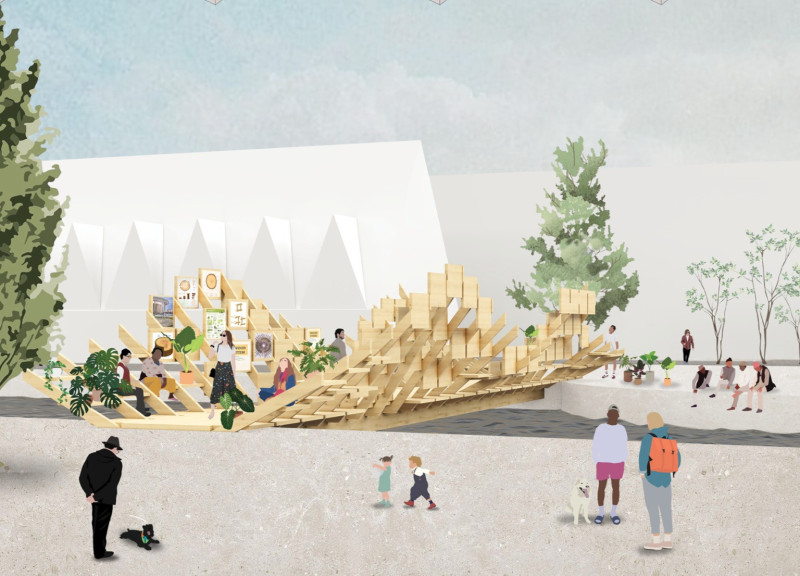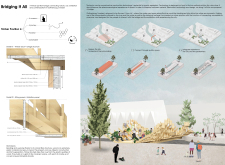5 key facts about this project
The architectural project "Bridging It All" presents a multi-functional timber pavilion designed to facilitate connections between urban and natural settings in Gothenburg, Sweden. This structure serves both as a bridge and a cultural space, integrating functionality with a context-sensitive approach that responds to the landscape and community needs. The design is heavily influenced by the characteristics of a river city, aiming to enhance public engagement and interaction with the environment.
Modularity and sustainability are central elements in this project. The pavilion's form encourages various configurations, allowing it to adapt to different events and functions. This flexibility is a key aspect of modern architectural design, enabling the space to serve as an exhibition venue and a communal area that fosters social interaction. The choice of timber as the primary construction material aligns with eco-friendly practices, emphasizing a commitment to sustainability while promoting the use of local resources.
Innovative Use of Timber The unique implementation of engineered timber and curved laminated wood sets "Bridging It All" apart from conventional structures. These materials not only contribute to the aesthetic quality of the pavilion but also enhance its structural integrity. The use of laminated boards supports the pavilion's grid system, allowing for an organic form that seamlessly integrates with the surrounding environment. This design approach highlights the potential of timber in contemporary architecture, balancing modern techniques with natural elements. The pavilion's expressive curves invite exploration and interaction, promoting a sense of discovery as visitors traverse the space.
Connection to Community and Nature "Bridging It All" serves as more than just an architectural structure; it acts as a catalyst for community engagement. The design encourages public use and interaction with cultural programming. Its proximity to natural landscapes further enhances its role in promoting environmental awareness. The pavilion creates a dialogue between architecture and its environment, drawing people to the river while providing a space for contemplation and gathering.
To gain deeper insights into the architectural details of "Bridging It All," including architectural plans, architectural sections, and architectural designs, readers are encouraged to explore the full project presentation. The unique aspects and thoughtful design approaches of this project are critical for understanding its role in enhancing urban life and connecting the community with nature.























